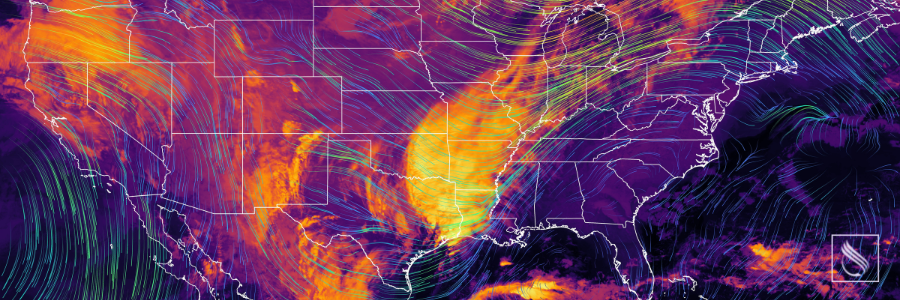It was a strange day in Riverside, California. I was about to leave work when I received a call from my daughter who told me that two tornadoes had just touched down a few miles from our house. In Southern California, tornadoes are uncommon, so people are more concerned about preparing for wildfires and earthquakes. Many were caught off guard due to lack of foresight. If your church was threatened by a tornado, would you be prepared?
Severe weather—including thunderstorms, tornadoes, and hurricanes—is likely to cause the most damage when we are unprepared. It is vital that our churches and schools have emergency plans in place and routinely practice those plans. For some storms, you may be warned weeks in advance, while others may strike with no warning.The Federal Emergency Management Agency, the National Weather Service, and the Department of Homeland Security have developed valuable resources to help us be prepared. Our churches and schools must educate themselves on the differences between thunderstorms, tornadoes, and hurricanes and develop different plans for what to do before, during, and after storms. This will help communities to be prepared, safe, and incur minimal losses.
Differences Between Severe Thunderstorms, Tornadoes, and Hurricanes
Severe thunderstorms are rain showers involving thunder and strong winds. Although common, they are still dangerous and threaten the lives and property of our communities. They can usually be predicted about seven days in advance.1Tornadoes are defined as “a violently rotating column of air touching the ground, usually attached to the base of a thunderstorm.”2 If conditions are favorable for tornadoes to develop, meteorologists may issue a watch several hours in advance. If a tornado is sighted, a warning is issued.3
Hurricanes are much larger tropical storm systems composed of multiple thunderstorms. Although tornadoes and hurricanes are both composed of strong horizontal winds, there are critical differences. When they touch down, tornadoes are rarely more than a few hundred feet across, while a hurricane’s horizontal scale is about a thousand times larger than a tornado.4
Hurricanes also have a different timescale; they can last for days or weeks, causing far more damage than other types of storms. Hurricanes are usually seasonal and can be detected several days in advance, which allows people time to prepare.
Preparing for Severe Weather
In order to protect your church or school from harm, it is essential that you appoint a crisis response team. Designate a communication plan and disseminate locations of shelter, especially for tornadoes. Create a plan that addresses at least two clearly defined evacuation routes in case one is inaccessible. It is also important to keep an inventory of all equipment and valuable property, reviewing the insurance policy for coverage, limits, and exclusions.Ensure that facilities are regularly inspected, reinforced, and supplied. If a storm is imminent, the following guidelines can help protect your ministry:
• Secure loose objects, such as roof shingles, gutters, and furniture.
• Board up all windows, secure all doors, and keep trees trimmed away from your church.
• Distribute emergency supply kits, placing them in strategic locations.
• Move vehicles to a safe location and always have a full tank of gas for each church vehicle.
• Charge all cell phones and find backup power sources.
• Check the fuel levels of generators and safely store additional fuel, if possible.
• Know how to turn off your gas, electricity, and water in case you must evacuate.5
Severe Thunderstorms
Most severe thunderstorms can be predicated a week in advance. It is important to monitor the National Weather Service and local media. In case a watch or warning is issued, review your emergency response plan. Communicate with your church or school community, making sure your property is adequately secured using the guidelines above.In order to stay safe during a thunderstorm, follow these general guidelines:
• Find safety indoors, away from lightning.
• Monitor alerts and warnings.
• Avoid using electrical outlets.
• If possible, do not use water.
• Stay alert for fallen power lines and trees.6
If property damage occurs, contact Adventist Risk Management, Inc. (ARM).
Hurricanes
The best time to prepare for a hurricane is before hurricane season, which runs from June 1 to November 30. Hurricanes can be unpredictable and chaotic. It is important to follow any communications from the National Weather Service, Federal Emergency Management Agency, and your crisis response team.• Determine if your property is in an evacuation zone and evacuate, if necessary.
• Avoid swimming or driving through flood waters. Seek dry land.
• If there is flooding, seek the highest level of a building.
• Avoid closed spaces, such as attics, because you may become trapped if waters rise.7
Phone systems are often overwhelmed following a disaster, so phone calls should only be made if there is an emergency. Instead, use text messages or social media to communicate with family and friends.
Hurricane damage can pose many additional risks for a congregation. If your church was damaged, do not reenter until a building inspector has examined it. Contact ARM to assess your coverage and to arrange an inspection. Photograph all property damage to document it.
Tornadoes
It is important to ensure that your church has appointed an emergency response team and that your plan addresses both hurricanes and tornadoes. Know your area’s tornado risk and consult your emergency plan.If you are in an area affected by tornadoes, monitor the National Weather Service and local media for watches and warnings. If there is a warning, follow the instructions of your crisis response team, which may involve evacuation or shelter-in-place. In the event of an unforeseen emergency, here are some general helpful guidelines:
• Seek the basement; if there is no basement, seek the smallest, most interior room.
• Keep clear of openings, including windows and doors.
• If you become trapped, use a cloth or mask to avoid breathing dust.
If you are not in a safe location, avoid sheltering under an overpass or bridge. Low, flat locations offer the most safety. Watch out for flying debris that can cause injury or death. Use your arms to protect your head and neck.8 9
Just because a tornado has passed does not mean that your congregation is safe. Follow updates from local authorities to be sure the danger has passed. Do not enter damaged buildings until you are told they are safe, and avoid fallen power lines. As with all property damage, contact ARM to assess your coverage and arrange for an inspection.
As Noah warned his community, emergency preparedness organizations are warning us today. Remember, if you heed their calls and plan ahead, you and your community can weather the storm.
References
1 How Reliable Are Weather Forecasts? (n.d.). NOAA SciJinks – All About Weather. https://scijinks.gov/forecast-reliability/2 Tornado Definition. (n.d.). National Weather Service. Retrieved January 26, 2023, from https://www.weather.gov/phi/TornadoDefinition
3 NOAA National Severe Storms Laboratory. (n.d.). Tornado Forecasting. https://www.nssl.noaa.gov/education/svrwx101/tornadoes/forecasting/
4 What is the difference between a tornado and a hurricane? | NASA Global Precipitation Measurement Mission. (n.d.). https://gpm.nasa.gov/resources/faq/what-difference-between-tornado-and-hurricane
5 Severe Storm Preparation and Safety. (n.d.). Adventist Risk Management, Inc. Retrieved January 26, 2023, from https://www.adventistrisk.org/getmedia/8c4a9012-d839-418f-a8eb-a4e3acc1e230/IFS_Storm_ALLEN?ext=.pdf
6 Thunderstorms & Lightning | Ready.gov. (n.d.). https://www.ready.gov/thunderstorms-lightning
7 Hurricanes | Ready.gov. (n.d.). https://www.ready.gov/hurricanes
8 Shelter in Place for Tornado. (n.d.). FEMA. Retrieved January 20, 2023, from https://www.fema.gov/sites/default/files/documents/fema_shelter-in-place_guidance-tornado.pdf
9 Be Prepared for Tornado. (n.d.). FEMA. Retrieved January 20, 2023, from https://www.agingresources.com/wp-content/uploads/2021/10/Tornado-Preparedness-Flyer-from-FEMA.pdf
Image Credits: Oană Liviu-stock.adobe.com


